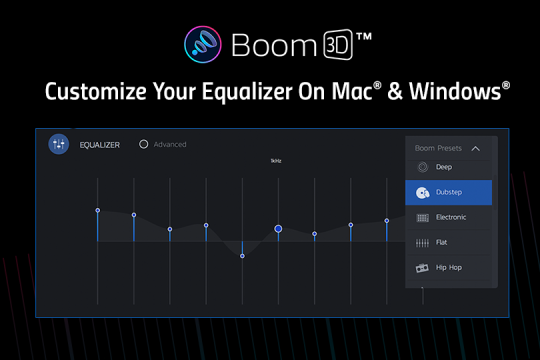

May don’t be defeated.Ĭut at frequencies of 50Hz, 200HZ,800Hz,3.2kHz and 12kHz. As a result try out group this circuit before.
Low frequency graphic equalizer for mac full#
If you are seeking Graphic Equalizer Circuit at can fine decorate the sound of music has full frequency sound section. This Graphic equalizer circuit using op-amp 4558-LF353 circuit 5 Channels 2 Octave Graphic Equaliser, easy to make equalizer,īecause using IC 4558 or LM1458 or LF353 (nice) The PCB of this circuit Graphic equalizer using 4558 LF353 When finished, we supply positive 12V circuit to be used immediately, without any adjustment.

Then we solder to the both PCB circuit are the volume and the equipment of IC join together successfully, as shown. We assemble the components on the PCB properly and check soldering points must be tightly all points. The strong point of this circuit be will reduce the interference between adjusting the volume the center frequencies similar is rise efficiency of the circuit And the sound quality is better than a general.ġ0 Channels Graphic Equalizer circuit by LA3600 IC As for second IC be doing in dual channel namely 2,4,6,8,10 channel. Reason The first circuit be work at odd channels, including channels 1,3,5,7,9.
Low frequency graphic equalizer for mac pro#
It can help compensate for the small speakers on your MacBook Air or MacBook Pro or fine-tune the bass and treble in your headphones to your personal tastes.

And uses the center frequency of the IC is interruption. The Apple Music App has an okay (i.e., usable) equalizer with plenty of presets for the average user. In the Figure is 10 channel equalizer circuit, which we have designed for the Q = 4. We can also be designed was the 10 Channel Graphic equalizer circuit. In addition to using the LA3600 IC, above was the 5 channel graphic equalizer. PCB 5 Channels Graphic Equaliser by LA3600 10 Channel graphic equalizer using LA3600 The supply voltage may be anything from +12V.īesides I still lead model PCB keep can give testimony try to build convenient increasingly. Boomy Room - for rooms that have this inherent acoustical low-frequency ringing.You who are a novice and love the saving may don’t miss group this circuit.Ĭut at frequencies of 50Hz, 200HZ,800Hz,3.2kHz, and 10kHz.Emulate Subwoofer - for loudspeakers without a subwoofer but with reasonable amount of low frequencies.Underground - for listening in noisy places, when natural lows block music lows (subway, loud places etc.).Darken - for loudspeakers and headphones that emphasize cymbals and guitar too much.Small Headphones - designed for earbuds which usually sound too harsh and lack bass range.Drive - make it more aggressive and crystallized, try this on rock and funk.Soften - brings down frequencies that ears are most sensitive to, making listening experience less tiring.Smile Curve - enhances the overall sound quality, especially helpful when listening through low-to-mid-cost loudspeakers or headphones.Kick - picks up the kick drum or other similar instruments from the mix, especially effective on rock/pop music.Less Cymbals - makes cymbals and other highest-frequency sounds bit quieter, without lowering the overall volume.Voice Lift - improves the clarity of vocals, makes voice frequencies appear closer to the listener.More Low Mid - amplifies the body of the sound when listening to rock music.More Highs - gently highlights hi-end (crispness) of music (cymbals, overtones in all instruments, presence).More Bass - slightly brings up low end and bass frequencies.You can use the equalizer as a creative tool in a party/DJ situations. Music Equalizer & Bass Booster & Volume Amplifier lets you adjust the frequency envelope of.When you are listening to it loud, you will probably benefit from reducing the hi-mid region as most sensitive. If you listen at a low volume, you might want to raise low and high frequencies. Timbre perception depends greatly on the loudness.

Compensate for changing acoustical background noise (in the subway, in a car, in crowded places) to avoid the need to increase the total volume.In-car audio systems vary significantly in the low/bass output while computer speakers need more EQ than serious hi-end loudspeaker systems Compensate for imperfect loudspeakers/headphones frequency response – earbuds always lack low frequencies but have abundant high-mid.Sometimes we may want to adjust frequency balance for better listening experience. Adjust the frequency components of music material to desired balance – not all recordings are of the same frequency balance, and they can’t be so because music is creativity.


 0 kommentar(er)
0 kommentar(er)
